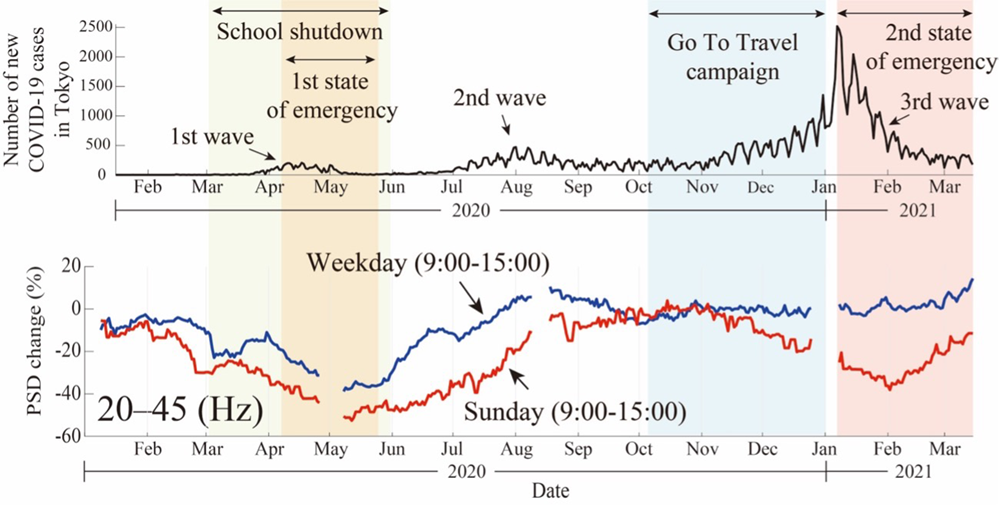Decreased economic and leisure activities during the COVID-19 pandemic interpreted from anthropogenic seismic noise levels
Summary of the AIST Press Release on November 5, 2021
>>Japanese
The seismometers record not only earthquake ground motions but various other vibrations. Nimiya Hiro (Research Institute of Earthquake and Volcano Geology), Ikeda Tatsunori and Tsuji Takeshi (Kyushu University) revealed the decrease of social activities during the COVID-19 pandemic from the seismic data installed in the Tokyo metropolitan area.
Seismic ambient noise with frequencies >1 Hz includes noise related to human activities (anthropogenic seismic noise). A reduction in seismic noise during the COVID-19 pandemic has been observed worldwide, as restrictions were imposed. This situation also presented a rare opportunity to study anthropogenic seismic noise in ambient seismic noise.
At AIST, although Suguru Yabe (Research Institute of Earthquake and Volcano Geology) reported a reduction of anthropogenic seismic noise level after the first state of emergency was declared (Yabe et al, 20201), Nimiya analyzed long-term data of the Metropolitan Seismic Observation Network (MeSO-net2) over a wider area and removed calendar effects and seasonal variations. To clarify the difference between economic and leisure activities, the data was separated into weekdays and Sundays.
The results showed the largest reduction in noise levels during the first state of emergency. After the first state of emergency was lifted, the noise reverted to previous levels immediately on weekdays and gradually on Sundays. This was likely because economic activities instantly resumed, while non-essential outings on Sundays were still mostly avoided. Furthermore, the noise level on Sundays was strongly reduced regardless of changes on weekdays after the second state of emergency. Sunday noise levels gradually increased from the middle of the second state of emergency, suggesting a gradual reduction in public concern about COVID-19 following a decrease in the number of infections. Our findings demonstrate that seismic noise can be applied to monitor social activities.
Fig. 1. Number of new COVID-19 cases in Tokyo (upper panel) and
temporal changes in the noise level without seasonal variation (lower panel).
PSD: Power Spectral Density
References:
1 Yabe, S., Imanishi, K., and Nishida, K., Two-step seismic noise reduction caused by COVID-19 induced reduction in social activity in metropolitan Tokyo, Japan. Earth Planets Space, 72, 167 (2020).
2 National Research Institute for Earth Science and Disaster Resilience (NIED) MeSO-net, National Research Institute for Earth Science and Disaster Resilience (2021), https://doi.org/10.17598/NIED.0023.


